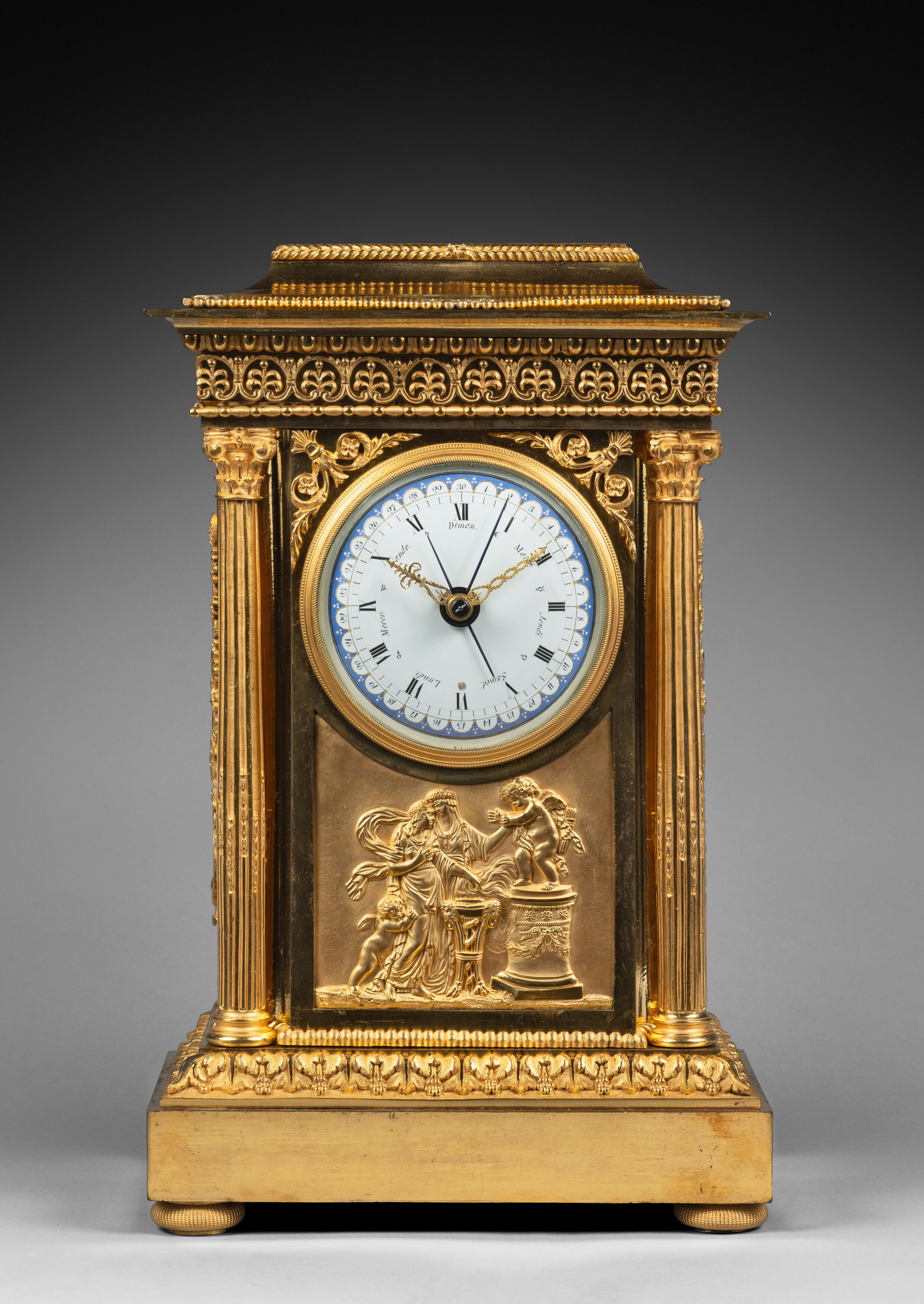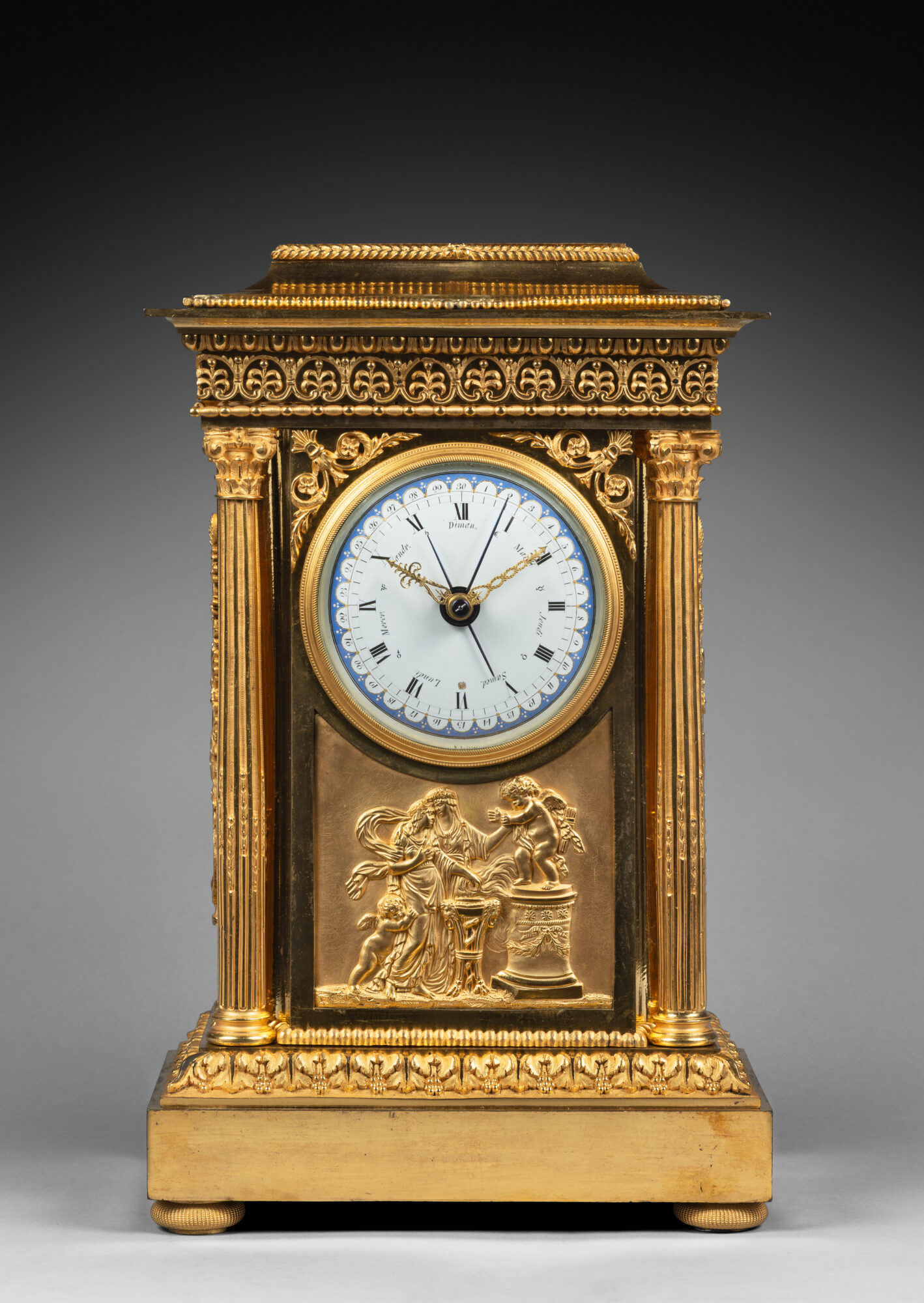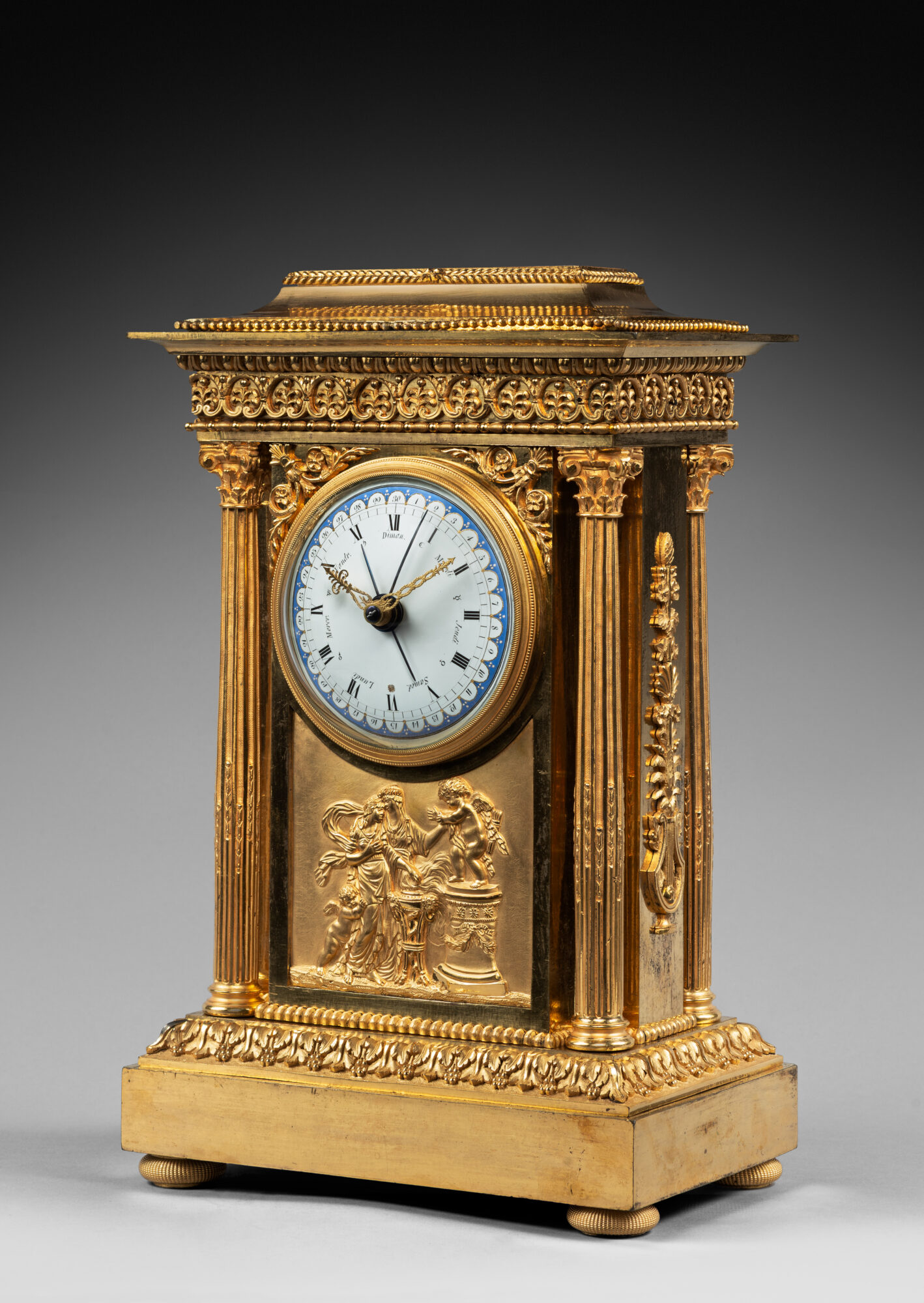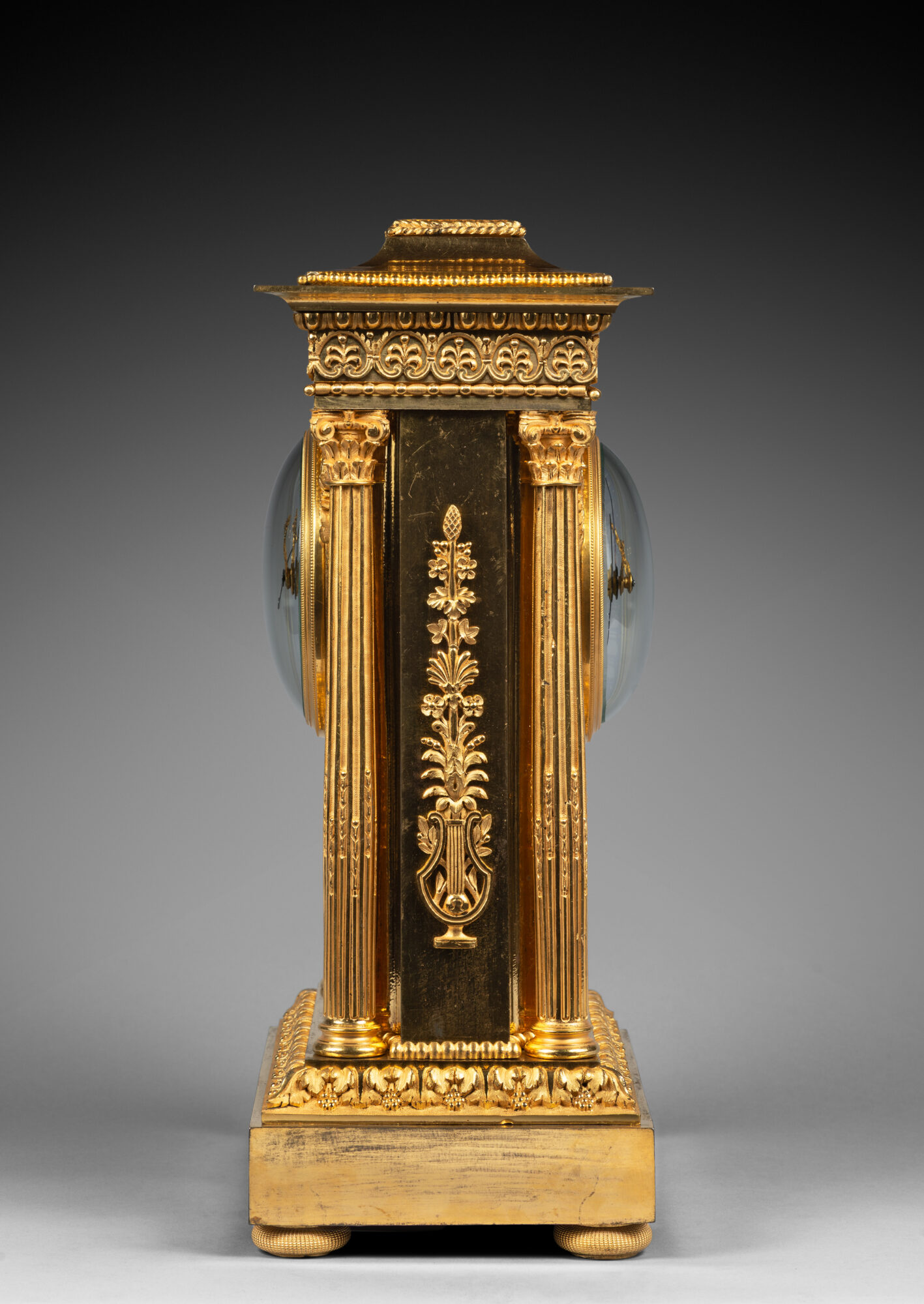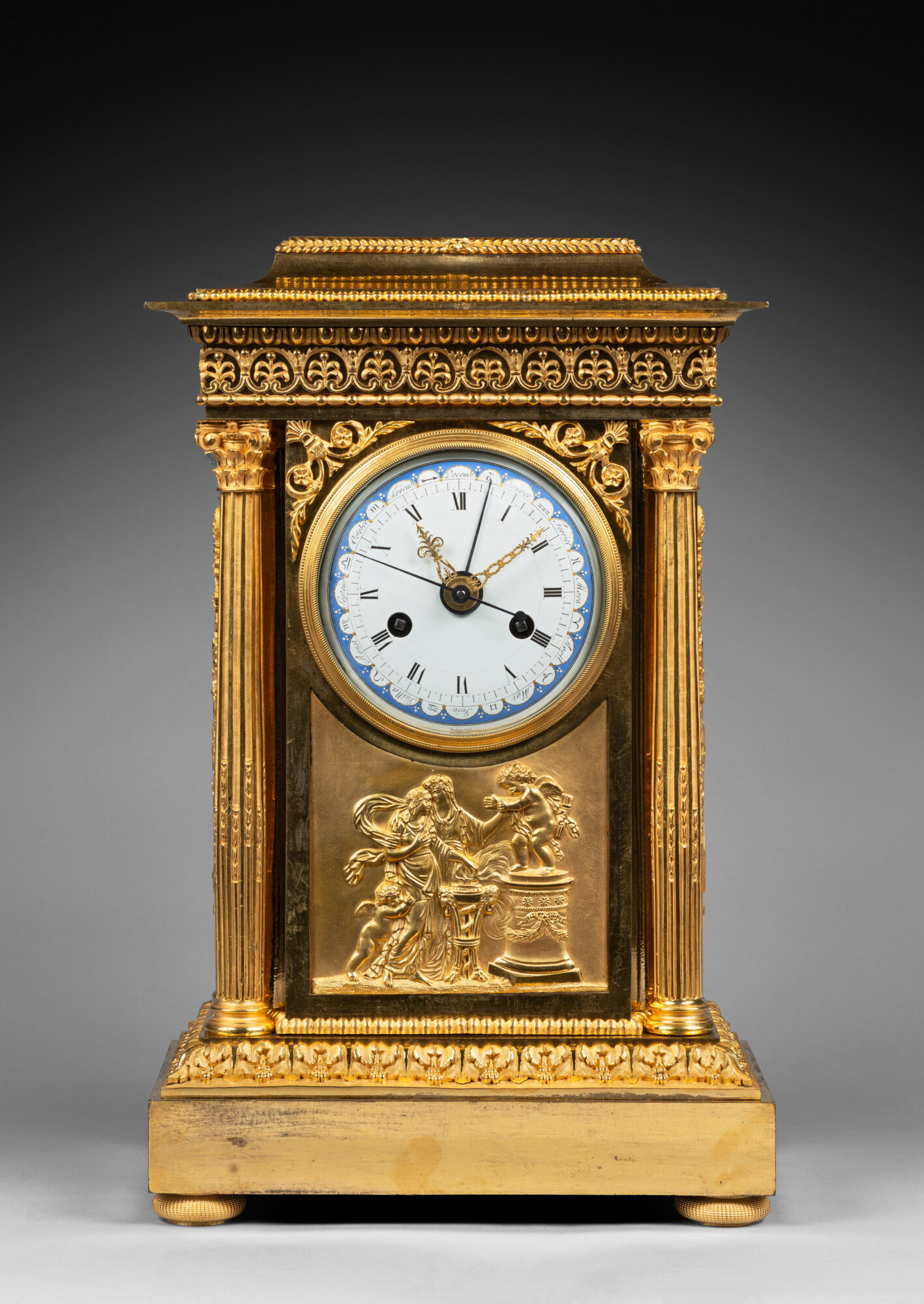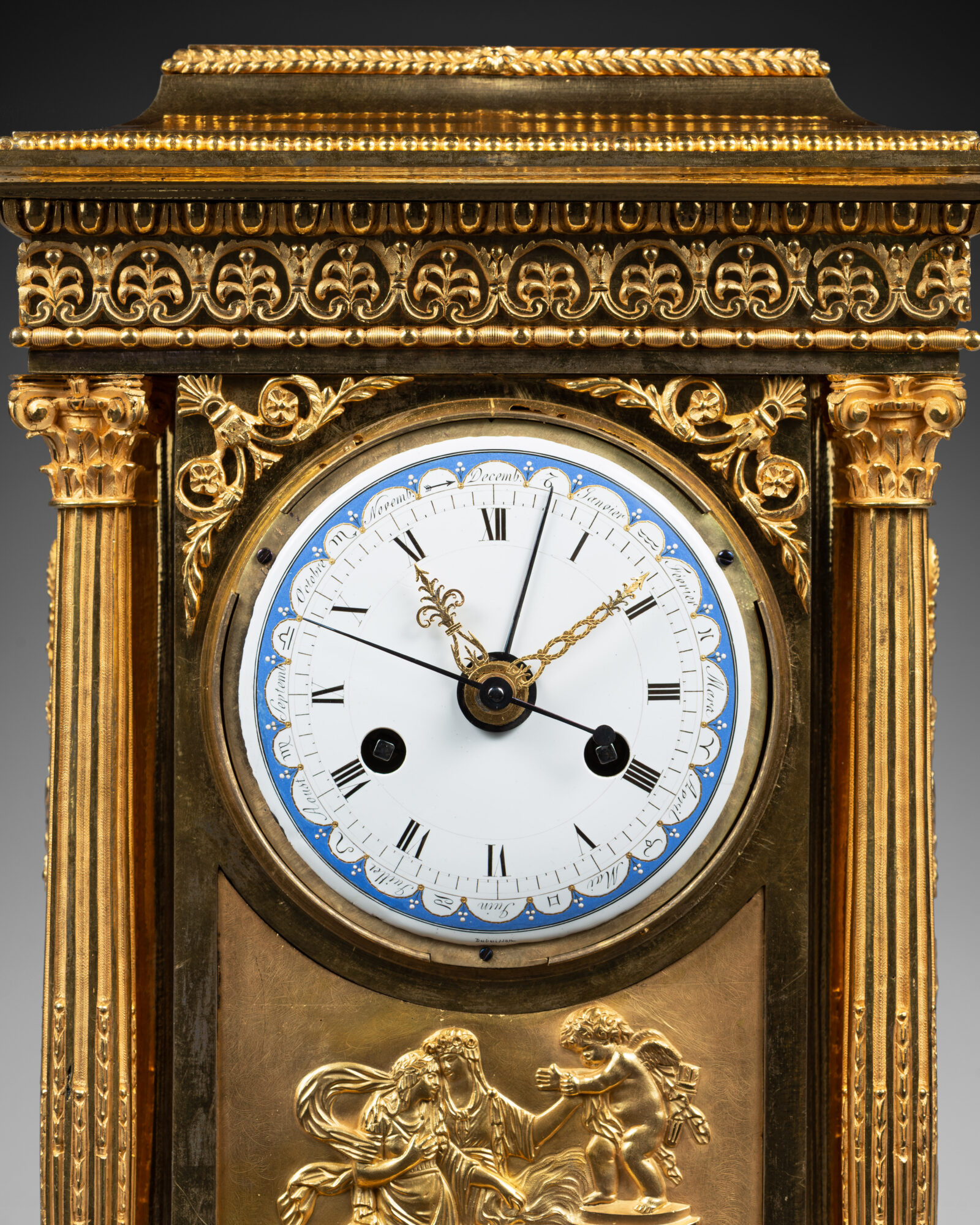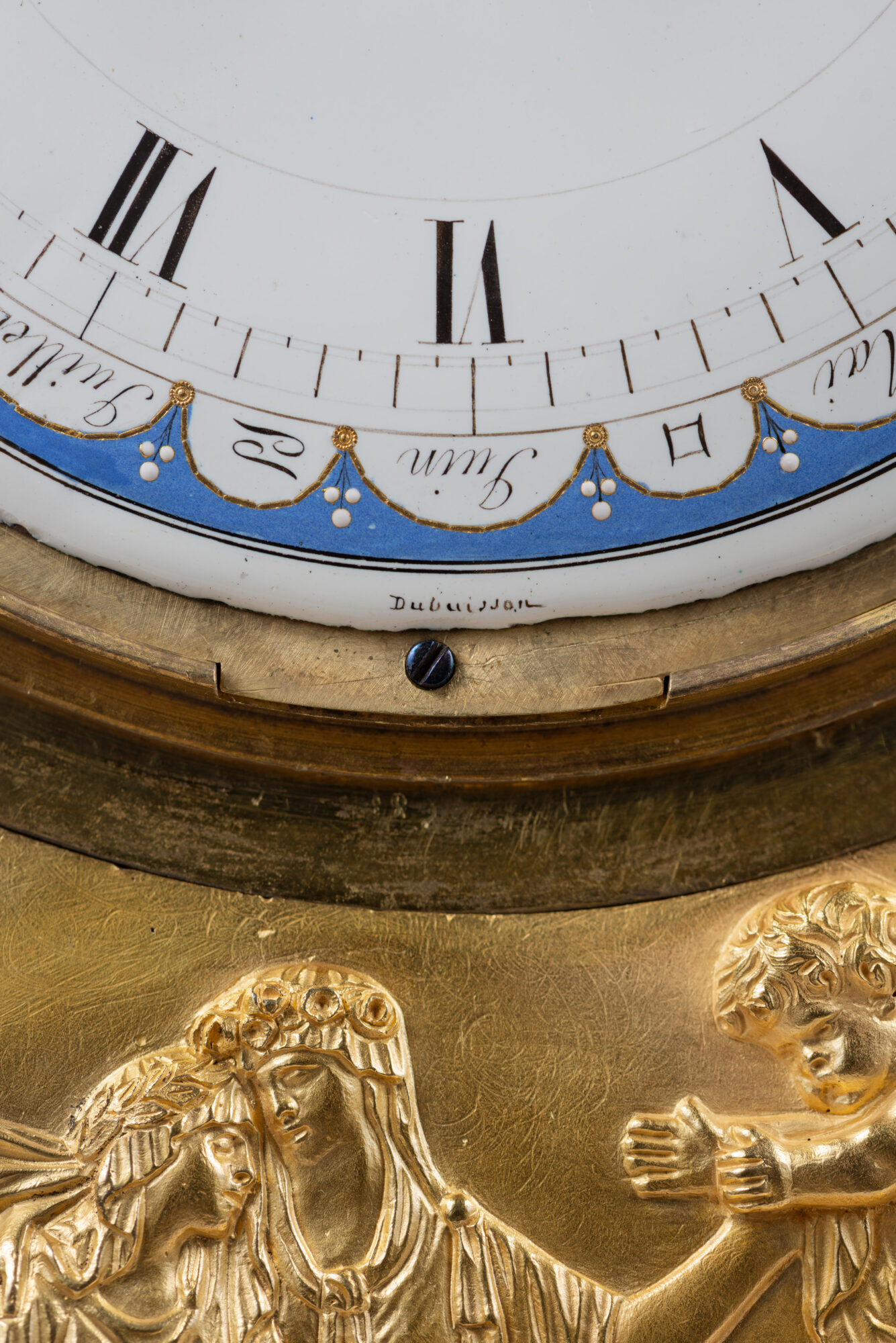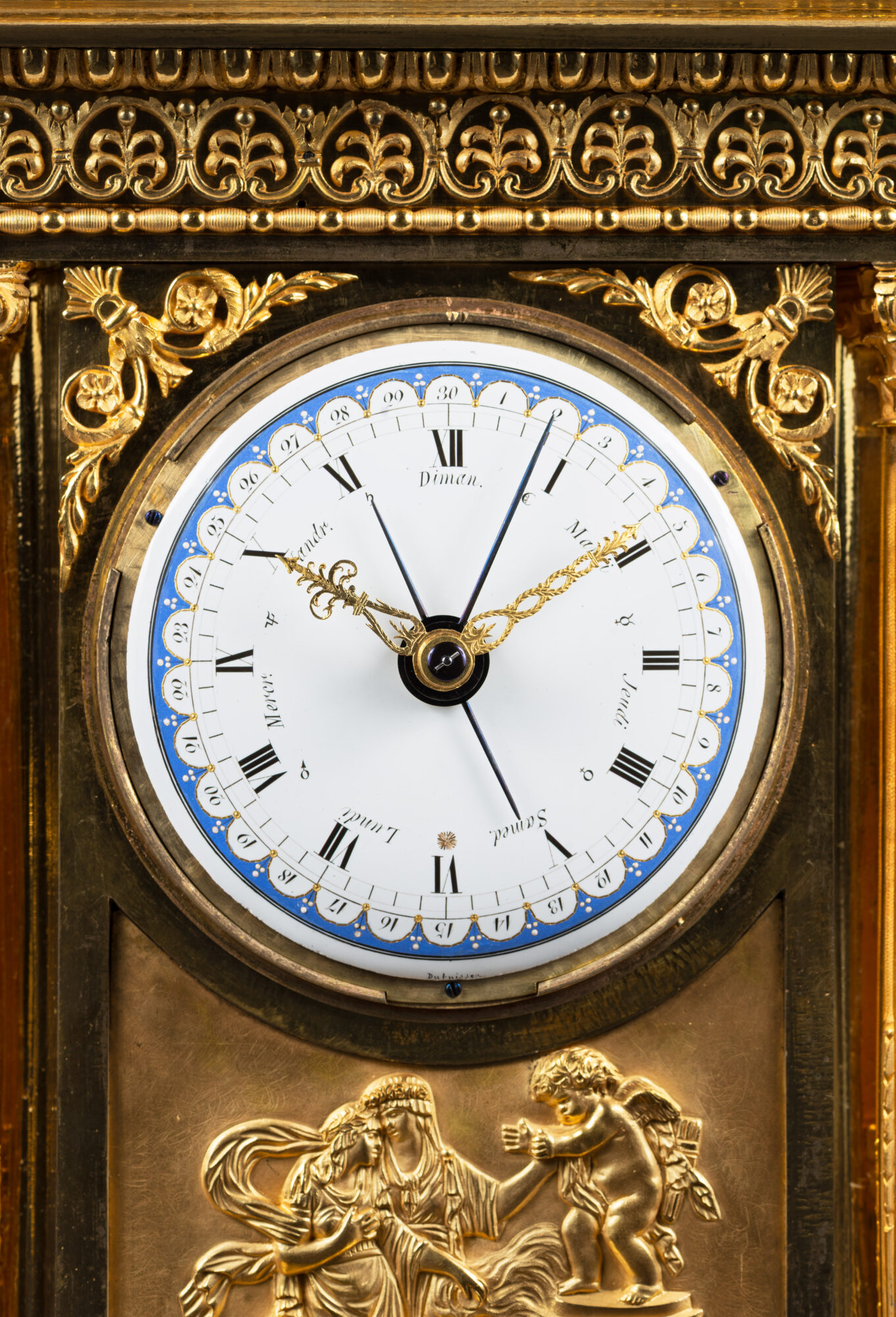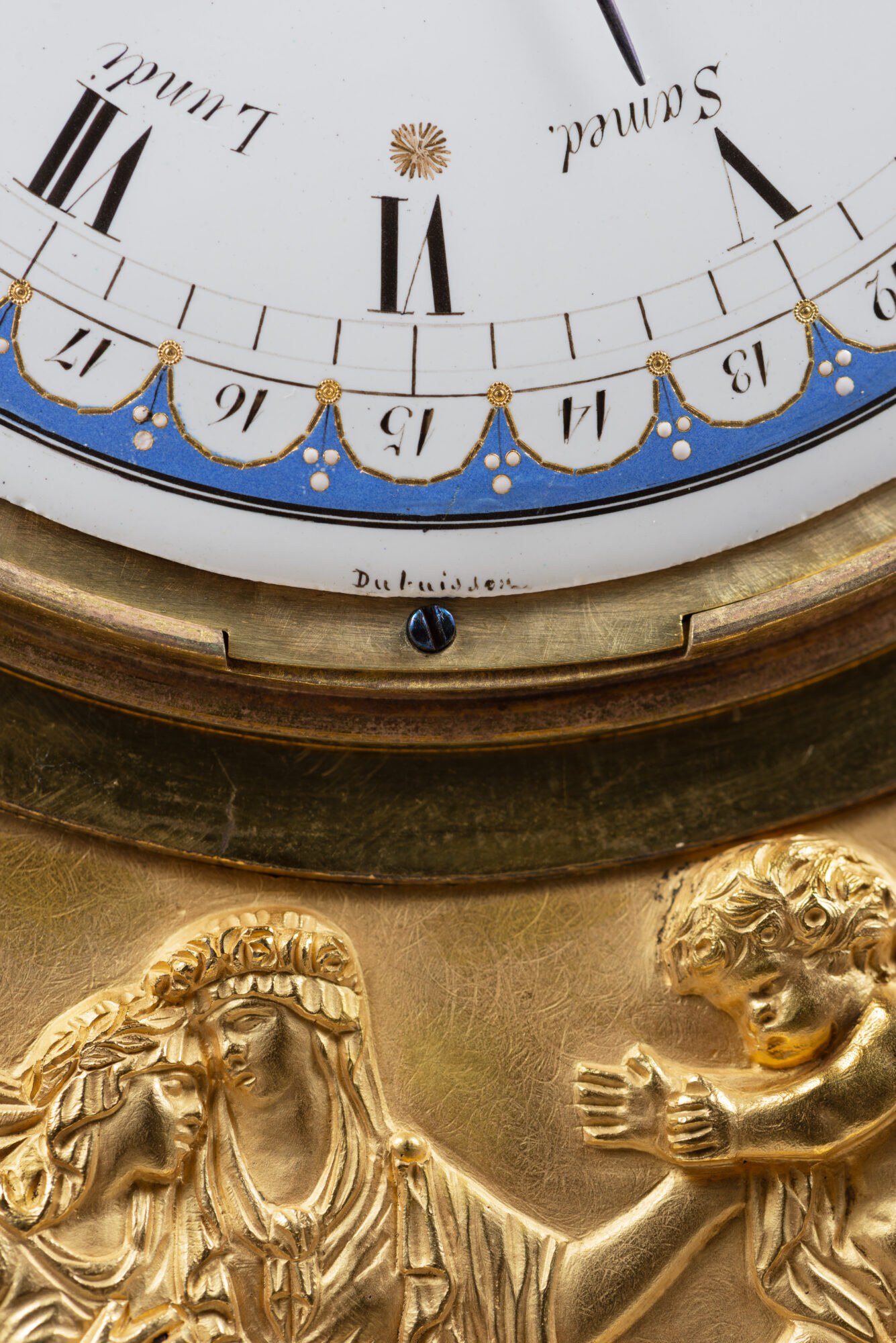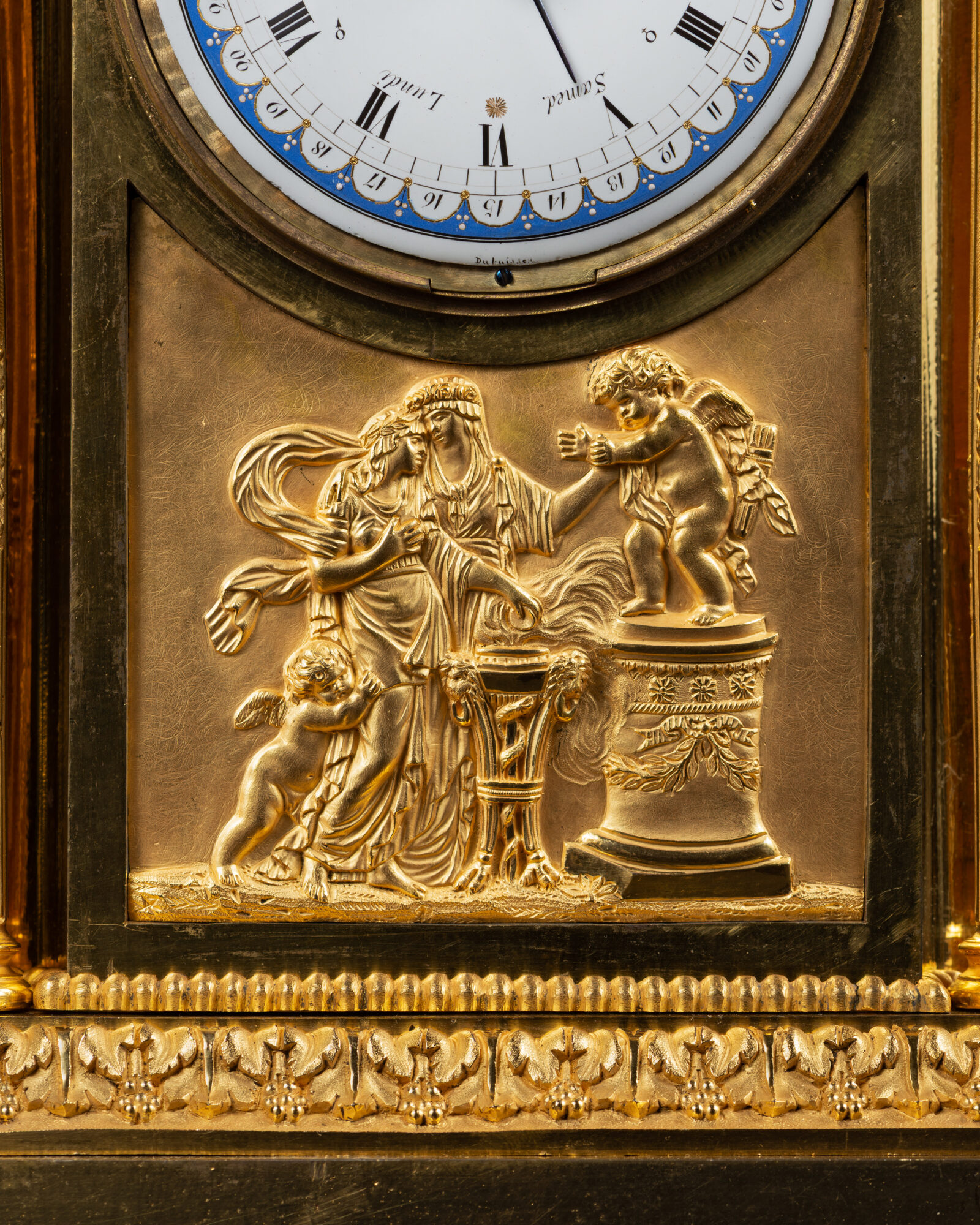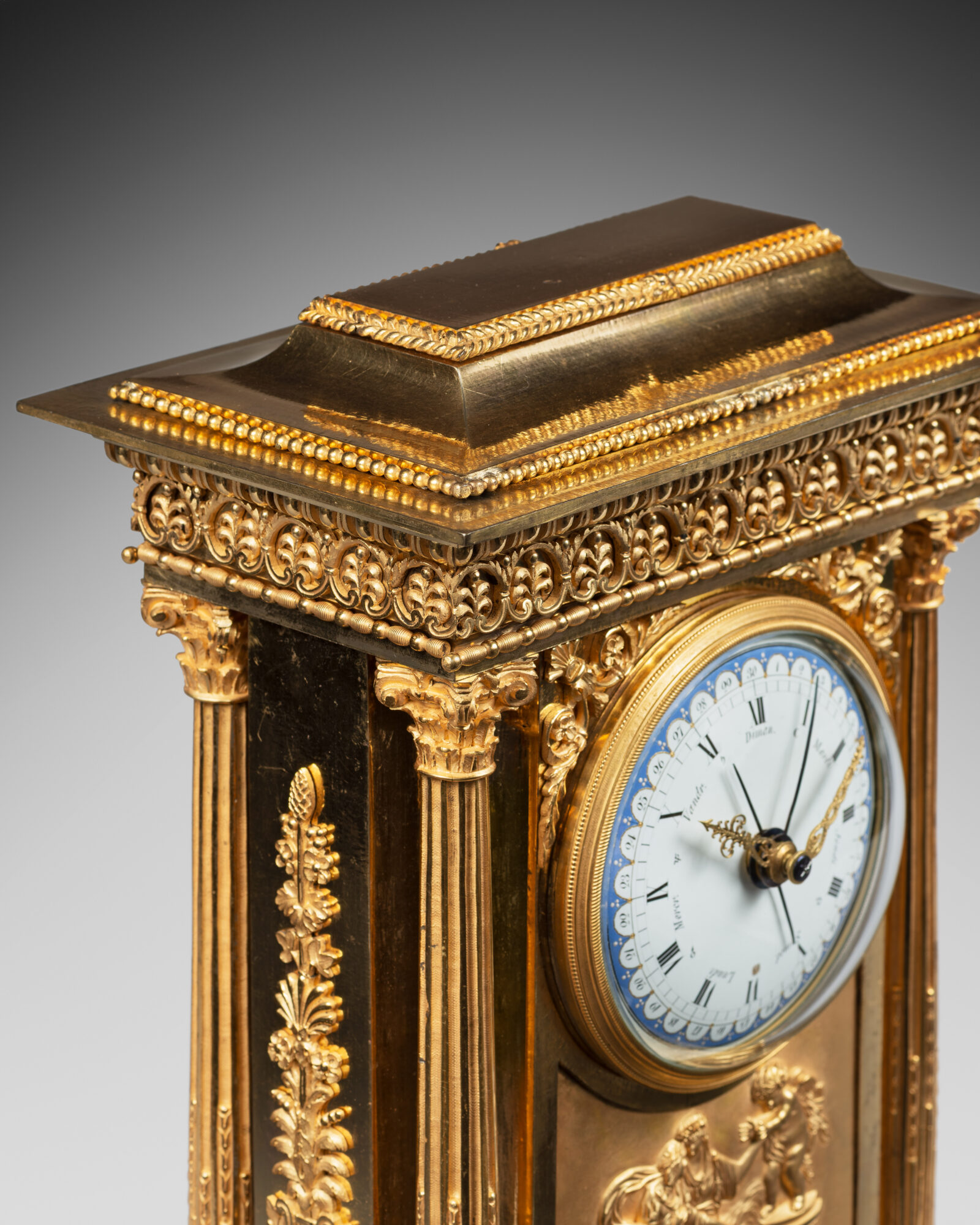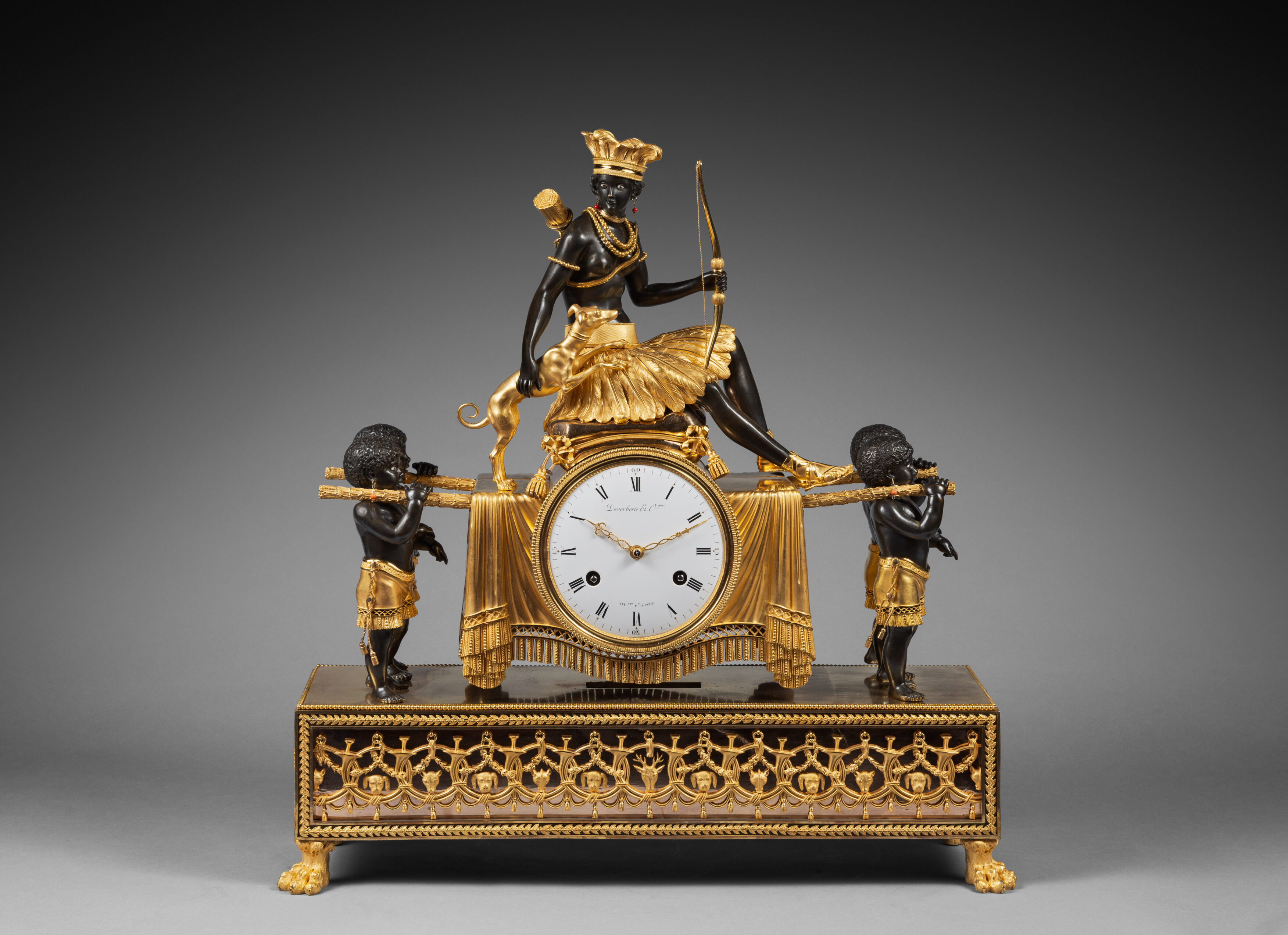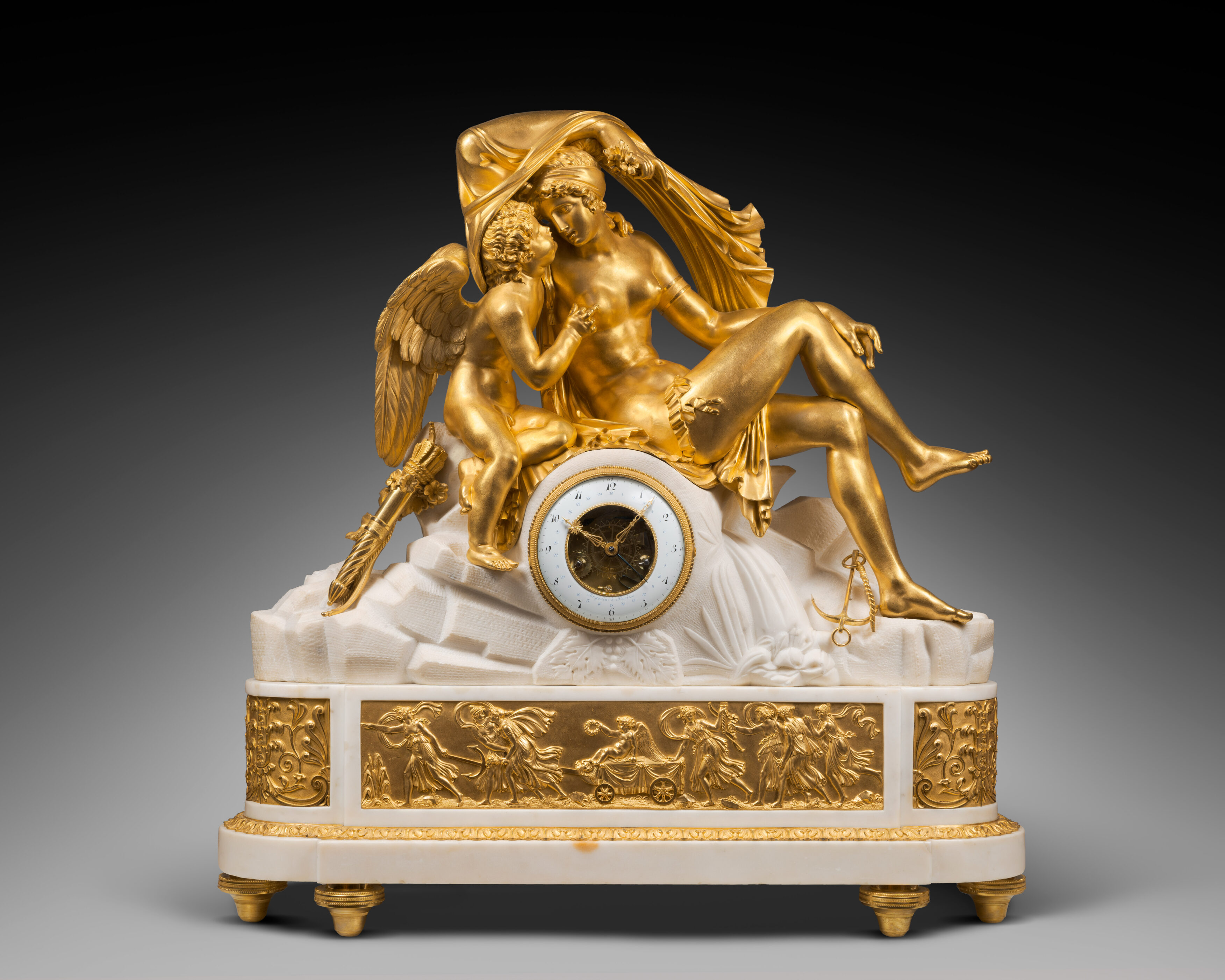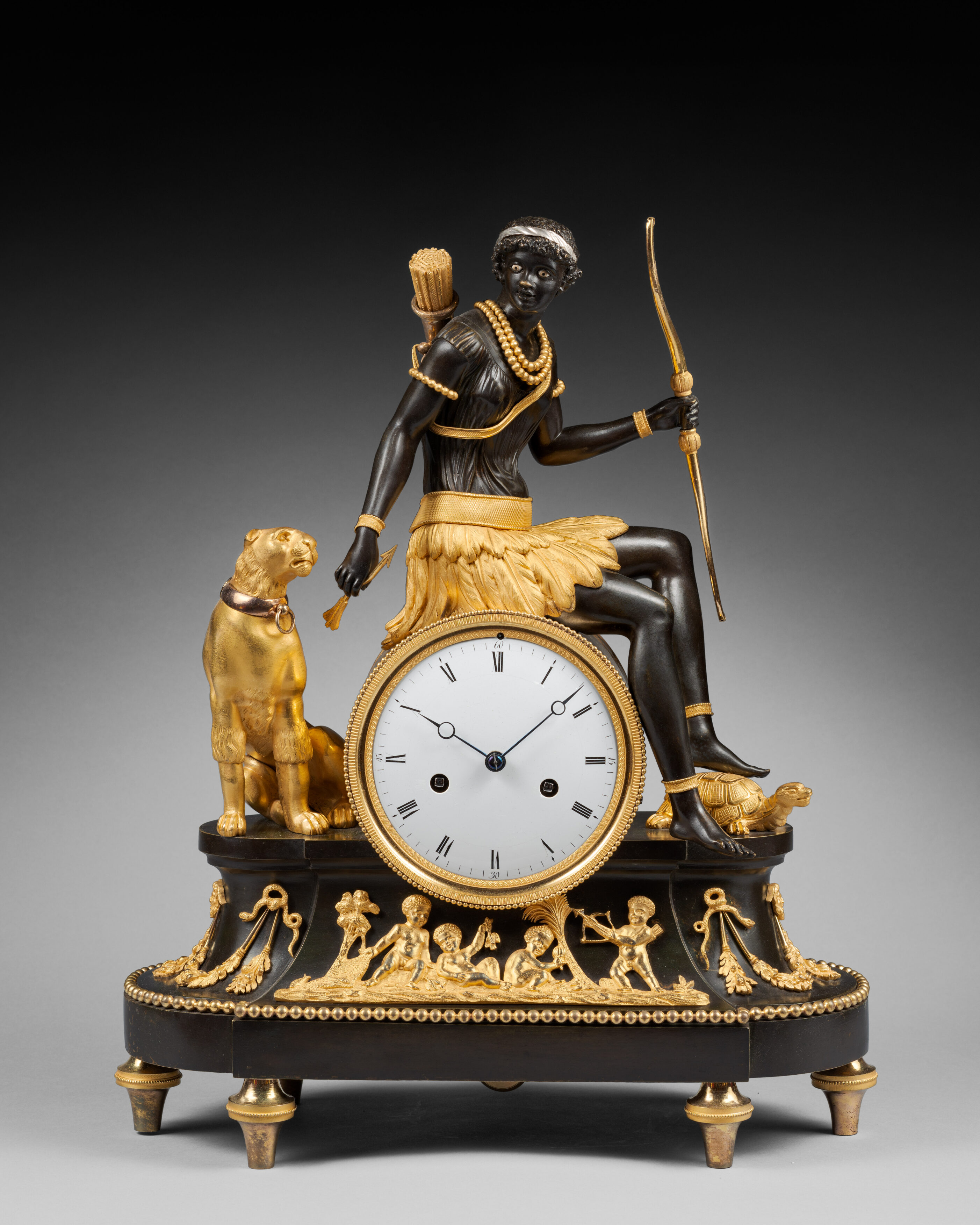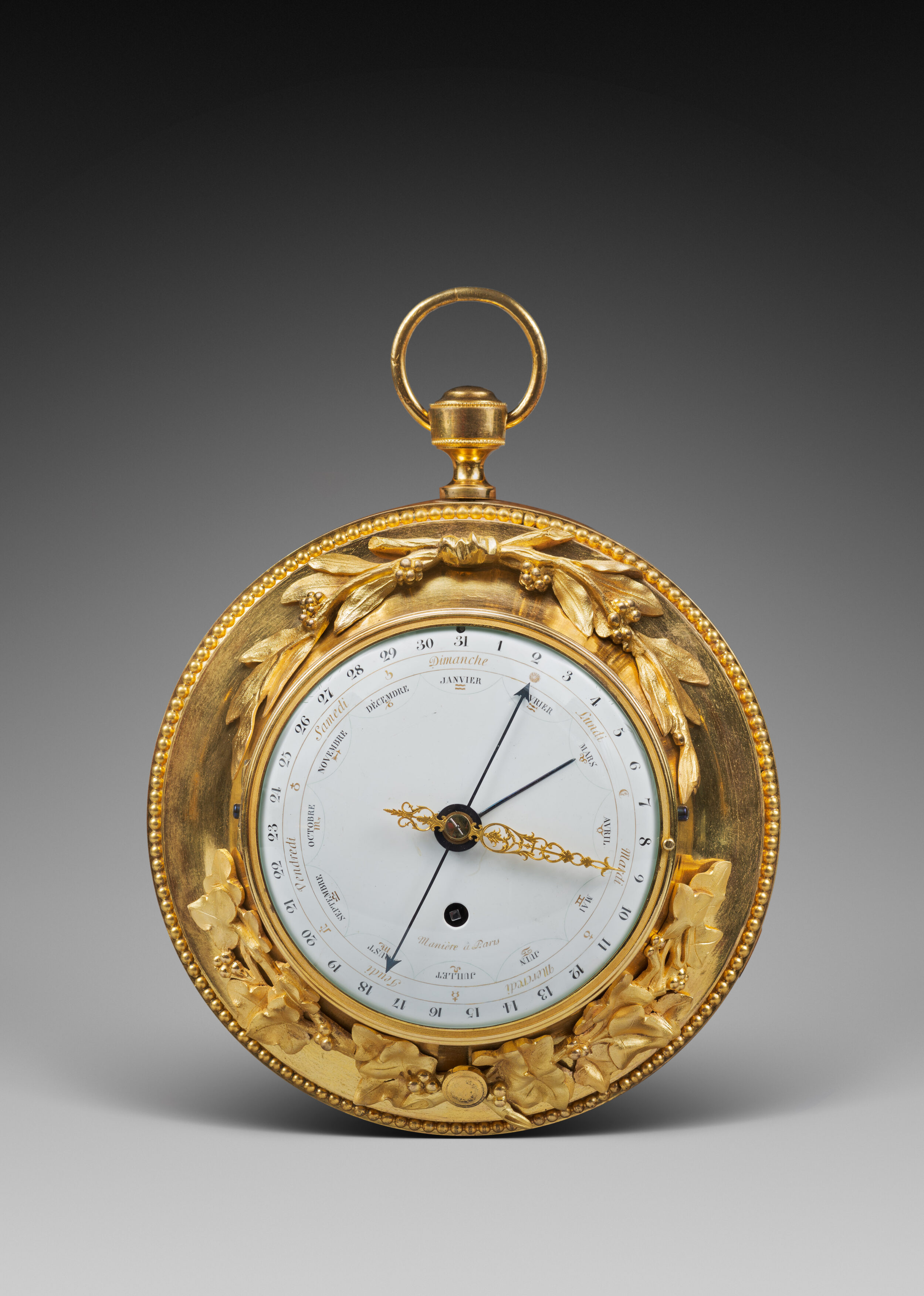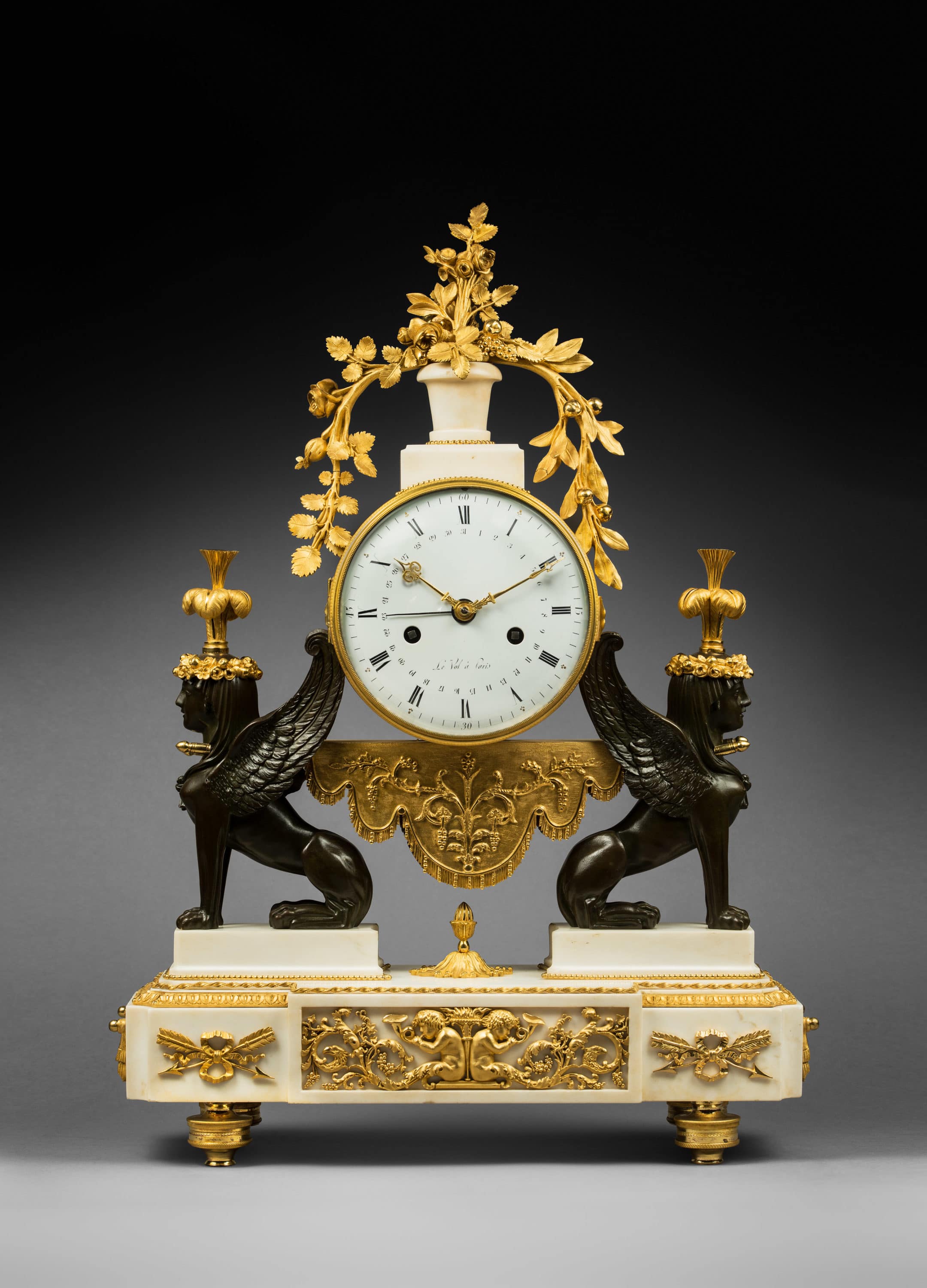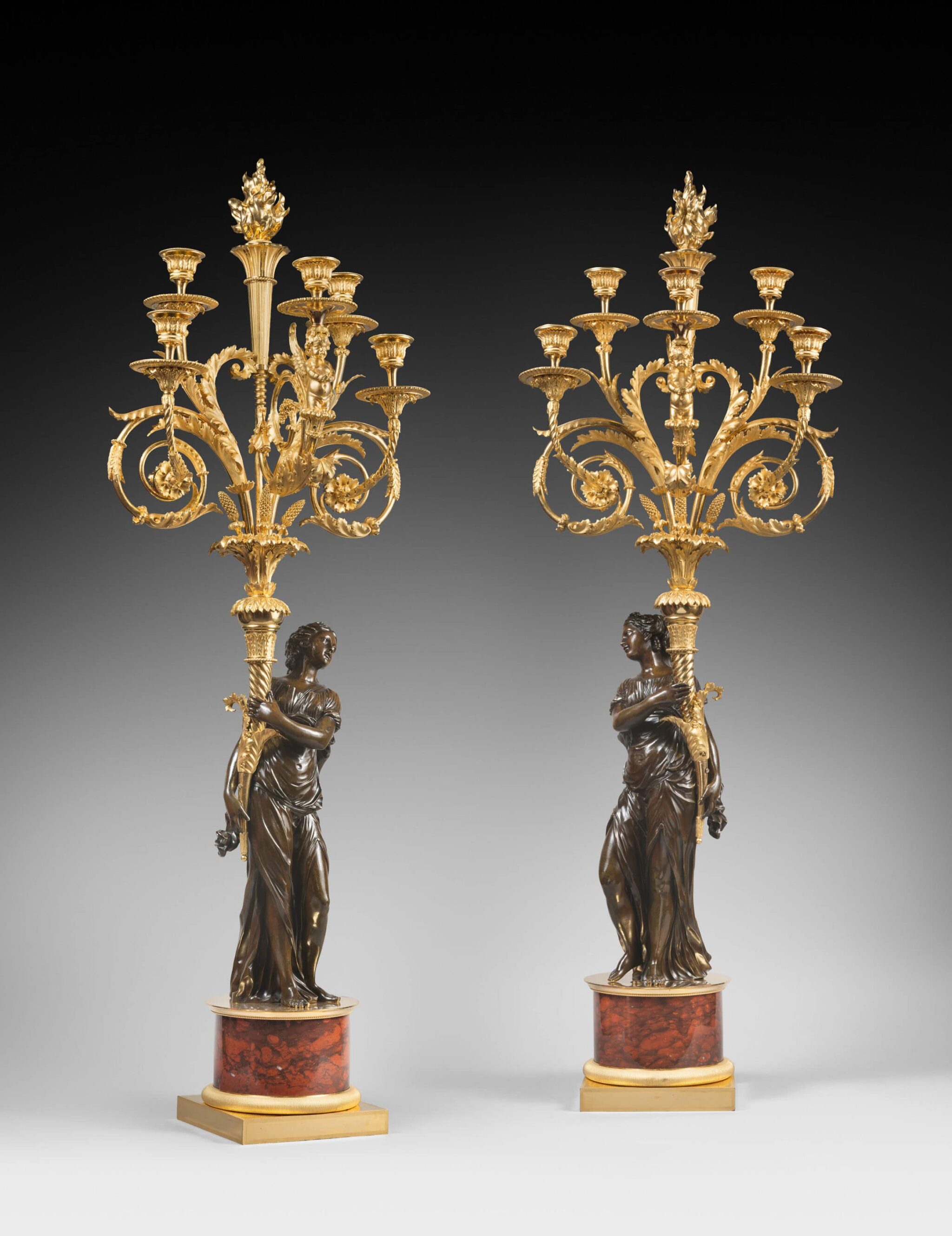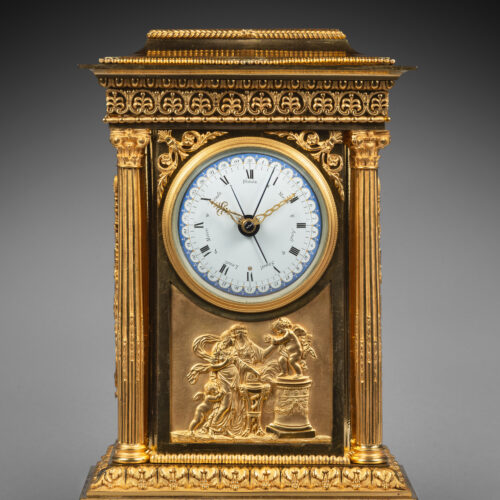Exceptionally Rare Double-Face Clock, with the Revolutionary Date, Calendar and Zodiac Signs, made of Finely Chased Bronze with Matte and Burnished Finishing
“The Vow of Love” or “The Sacrifice to Love”
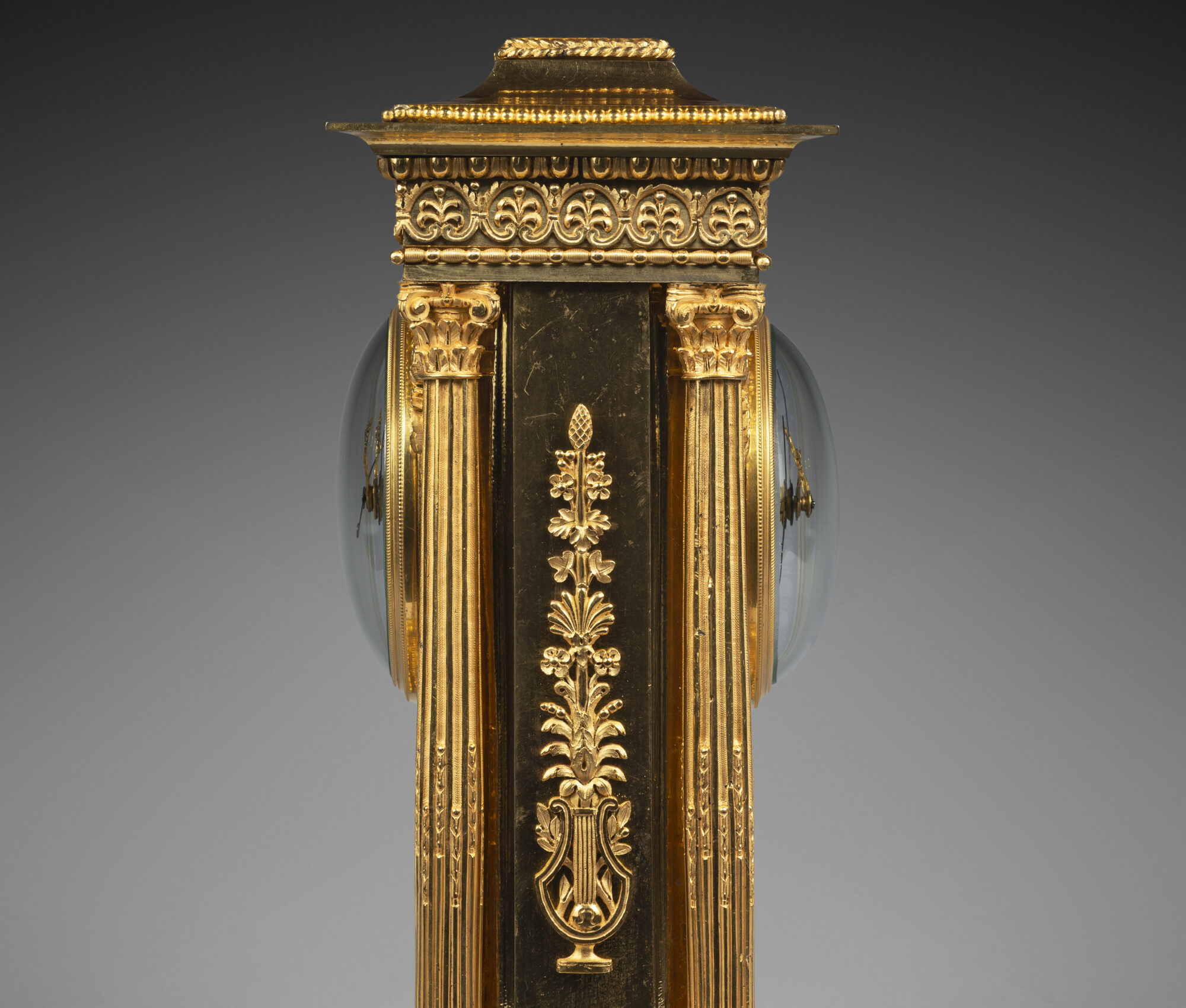
Case attributed to master chaser-gilder François Rémond
Dials signed “Dubuisson” by enameller Etienne Gobin, known as Dubuisson
Paris, Convention-Directory period, circa 1795
The circular white enamel dials feature an outermost sky-blue border decorated with beads and stems. They are signed “Dubuisson” on the lower part. One dial indicates the Roman numerals hours, the minutes graduations, and the months, along with their Zodiac signs. The other has Roman numeral hours, minutes graduations, the Revolutionary date and the days of the week along with their corresponding symbols. There is a total of seven hands, four of which are made of pierced and engraved gilt bronze. The dial with the winding holes has a central seconds hand that beats the half second. The movement is housed in an architectural case made of finely chased gilt bronze with matte and burnished finishing. The uppermost portion of the clock is adorned with braid and bead friezes and rests on a protruding cornice decorated with an egg-and-dart frieze surmounting a band of applied motifs and a frieze of C-scroll reserves containing leafy stalks. The latter is placed between friezes of alternating round and oval-shaped beads. On either side of the case there are detached columns decorated with rudented fluting and Corinthian capitals. The sides are adorned with leafy thyrsi that emerge from lyres. The façades, whose upper corners are adorned with leaf spandrels, are decorated with low-relief panels depicting a young woman making a promise of love as a Vestal Virgin encourages her to make a vow to the sacred fire burning at the foot of an altar made up of a truncated column on which stands the figure of Cupid. The quadrangular molded base is adorned with a frieze of acanthus leaves and seeds. It stands on four flattened and knurled feet.
The exceptionally high quality of the present clock case’s chasing and gilding allow us to attribute it to François Rémond, one of the most talented Parisian bronze casters of the final decades of the 18th century. Its remarkable design, and in particular its double time indication, suggest it may have been specially commissioned by an important connoisseur. The commissioner would no doubt have displayed it on a piece of furniture – perhaps a desk – thus allowing viewers, perhaps sitting facing each other, to read the time simultaneously on either side of the clock. This design, which is extremely rare in contemporary Parisian horology, may also be seen in a desk regulator made by Antide Janvier that was made during the final years of the 18th century; it may be seen in Michel Hayard, Antide Janvier 1751-1835, Horloger des étoiles, Editions L’Image du Temps, Villeneuse-Tolosane, 1995, pp. 97-98.
François Rémond (circa 1747 - 1812)
Along with Pierre Gouthière, he was one of the most important Parisian chaser-gilders of the last third of the 18th century. He began his apprenticeship in 1763 and became a master chaser-gilder in 1774. His great talent quickly won him a wealthy clientele, including certain members of the Court. Through the marchand-mercier Dominique Daguerre, François Rémond was involved in furnishing the homes of most of the important collectors of the late 18th century, supplying them with exceptional clock cases, firedogs, and candelabra. These elegant and innovative pieces greatly contributed to his fame.
Dubuisson (1731 - after 1820)
Etienne Gobin, known as Dubuisson, was one of the most talented Parisian enamellers of the reign of Louis XVI and the Empire period. Born in Luneville in 1731, he began his career as a painter on porcelain in Strasbourg and Chantilly. He then moved to Paris and worked at the Royal Sèvres porcelain manufactory from 1756 to 1759, specializing in the decoration of watch cases and clock dials. In the 1790s, his workshop is mentioned as being in the rue de la Huchette, then the rue de la Calandre around 1812. He appears to have retired in the early 1820s. He mostly signed his work “Dubuisson” or “Dub”, sometimes “Dubui”. Having worked with the most renowned clockmakers of his time, including Robert Robin, Kinable, and the Lepautes, Dubuisson was the main rival of Joseph Coteau. Specializing in watch cases and enamel dials, he was famous for his exceptional talent and his ability to render detail. His body of work, always of the highest quality, is considerable. To mention only a few of his pieces, some clocks bearing his signature are today in Pavlovsk Palace near Saint Petersburg, in the Louvre Museum in Paris, and in the Royal British Collection.
